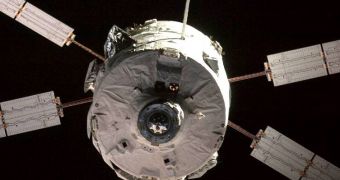For a long time, the European Space Agency (ESA) has said that it plans to gain orbit-to-Earth capabilities, meaning it wants to develop a system that would serve the same function as the American shuttles, which are able to take cargo to the International Space Station, but to return materials as well. The European agency is, at this point, turning its eyes towards the Automated Transfer Vehicle (ATV) line, which is the most prone to modifications. The unmanned spacecraft can easily be upgraded into manned capsules, space experts believe.
The current space flight plans that the agency has state that the ATVs are discarded after every mission, but some say that the measure is a waste, and that the capsules could be outfitted with systems that would ensure they do not burn up during atmospheric reentry. There are, however, some officials who seem to believe that Europe needs a fully capable space platform, to be built from scratch, rather than on existing spacecraft.
To some extent, that would make sense, some say, because despite its success, the ATV was simply not conceived to take people to space. And, even if that hurdle is overcome, by rearranging its internal configurations, space for life support systems and other essential functions required by manned flight would run out fast. Additionally, at this point, the ATVs aren't even able to bring back a patch of metal from their own structure, let alone some cargo or people.
When Jules Verne flew to the ISS last year, it returned to Earth in a ball of fire, which exploded over the Pacific Ocean. It became clear then to all officials at ESA and in the EU that the amount of money they would have to spend on reconfiguring an ATV was about the same they would have to give for an all-new rocket.
The advantages to the second option, the Head of Advanced Projects Division at the Astrium aeronautics company, Philippe Berthe, says, are more significant than for the first option, even at first glance. A new generation of lift systems could be used for decades, such as the Soyuz capsules are employed in the Russian Federation.
“The two key technologies for this cargo vehicle are the re-entry technologies – high speed entry and thermal protection systems; and also the descent and landing capability – the capability to land under parachute,” he said, quoted by the BBC News.
“The reason why we are studying the manned version of the capsule is not because we are necessarily going to approve it – we may not; but what we are trying to do is develop the cargo version already in line with what could eventually become the human version. In this way, we would not waste time and money if – as I hope – the manned version is eventually approved,” ESA Director of Human Spaceflight Simonetta Di Pippo added.

 14 DAY TRIAL //
14 DAY TRIAL //